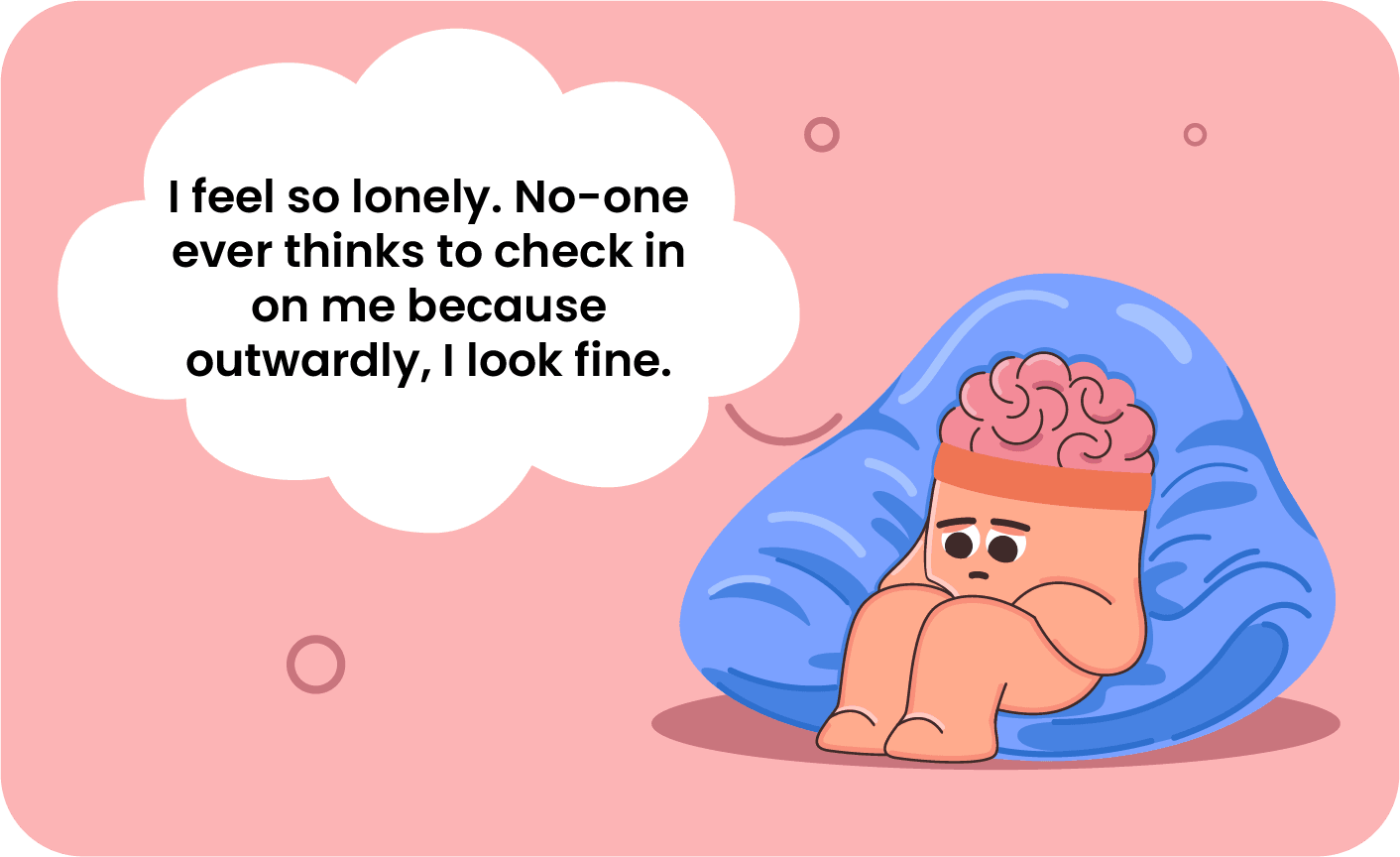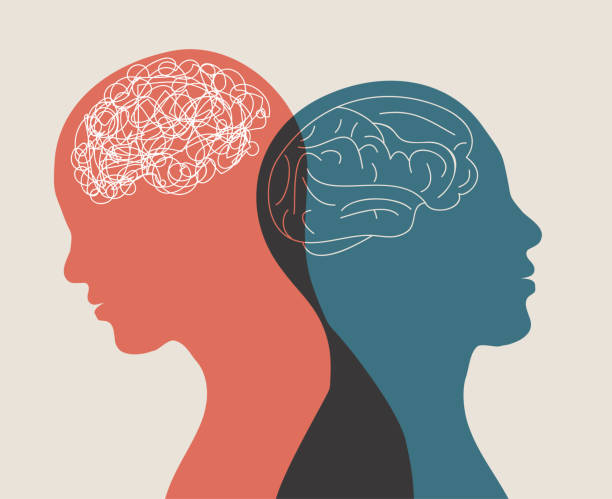Introduction
High-functioning depression (HFD)—also known in clinical terms as Persistent Depressive Disorder (PDD)—is an invisible burden carried by many who appear outwardly successful every day yet suffer inner exhaustion and emotional flattening. This article peels back the calm exterior to uncover the steady undercurrent of sadness, explores the psychological and biological roots, and offers recovery strategies that blend science with compassion.
Read More- Main Character Syndrome
What Is High‑Functioning Depression?
High-functioning depression isn’t a recognized diagnosis in the Diagnostic and Statistical Manual of Mental Disorders (DSM‑5), but it maps closely onto Persistent Depressive Disorder (PDD), formerly known as dysthymia. PDD is defined by a depressed mood that lasts for at least two years in adults, accompanied by symptoms such as low energy, poor sleep, low self-worth, and diminished interest in usual activities (American Psychiatric Association, 2013).

High-functioning individuals often keep up with work, social obligations, and routines. Yet beneath the surface they wrestle with a “smoldering” depression that chips away at vitality and joy, often for years (Kanter et al., 2019).
Why “High‑Functioning” Can Be Misleading
Labeling depression as “high-functioning” can downplay its seriousness. Though sufferers are performing externally, PDD often coexists with significant psychological pain. Studies show that those with PDD face higher long-term risk for developing major depressive episodes, social impairment, and increased suicidal ideation (Klein & Santiago, 2019). The label can lull friends and clinicians into overlooking the chronic distress beneath surface-level competence.
Signs of HFD
Typical presentations include:
- Persistent low mood for most days over two years (or one year in children and adolescents)
- Low energy, tiredness, and sluggishness
- Poor sleep or hypersomnia, appetite changes
- Difficulty concentrating, indecision
- Feelings of guilt, low self-esteem, and hopelessness
- Diminished pleasure in activities once enjoyed (anhedonia) (American Psychiatric Association, 2013)
Even accomplished individuals report a gnawing flatness—a sense of going through motions without vitality or genuine satisfaction (Kanter et al., 2019).
Psychological and Biological Origins
Its predisposing and neurobiological factors are:
Predisposing Factors
Several factors increase risk:
- Genetic predisposition and family history of mood disorders (Klein & Santiago, 2019)
- Chronic life stressors: financial pressure, relationship problems, role overload
- Personality traits such as neuroticism, perfectionism, and self-criticism (Ehring et al., 2020)
- Early trauma or chronic stress as a child or adolescent (Heim & Binder, 2012)
Neurobiology of Chronic Depression
PDD aligns with specific neural patterns:
- Dysregulation in the hypothalamic-pituitary-adrenal (HPA) axis, resulting in elevated baseline cortisol
- Altered neurochemistry in serotonin, norepinephrine, and dopamine circuits
- Reduced hippocampal volume and prefrontal cortex functioning seen in long-duration depression (Sheline et al., 2019)
Chronic low-grade depression appears to engage persistent, but low-intensity, neurobiological stress responses.
Why HFD Can Go Unnoticed
Some of the reasons why it can be undiagnosed are:
1. Masking Through Function
People often manage to meet societal expectations—jobs, relationships, chores—while internally coping with emotional exhaustion. This performance masks both suffering and need for help. Clinicians and loved ones may mistakenly perceive that “if they’re functioning, they’re fine.”
2. The Self-Silencing Trap
Individuals with HFD frequently self-silence—minimizing or rationalizing their feelings. They may believe that complaining or seeking help is weakness or burden to others. Cultural, gender, or familial messages reinforcing stoicism further enforce silence. But self-silencing deprives sufferers of validation and support, exacerbating isolation.
3. Diagnosis Delays
On average, research shows adults with PDD often endure symptoms for years—frequently not receiving a formal diagnosis until 5 to 10 years in (Klein & Santiago, 2019). This delay results from both subtle symptom presentation and tendency to normalize the persistent low mood.

Impact on Life & Functioning
Emotional Toll
Living with emotional flatness, guilt, and self-criticism daily undermines self-esteem and mood. Chronic low energy erodes motivation for hobbies and relationships, leading to social withdrawal over time (Ehring et al., 2020).
Physical Consequences
Persistent fatigue and disrupted sleep linked to PDD can result in somatic symptoms: headaches, digestive problems, poor immune resilience (Sheline et al., 2019). Sleepless nights and chronic cortisol exposure may also compound physiological wear and tear.
Cognitive Effects
Concentration and flexibility decline, making decision-making feel weighted. Many describe a “brain fog” that makes both work and leisure less satisfying, fueling a belief that nothing brings restful ease anymore.
Treatment & Recovery Paths
The treatment and recovery includes:
Psychotherapy
Evidence-based therapies like Cognitive Behavioral Therapy (CBT), Interpersonal Therapy (IPT), and Behavioral Activation have proven effective in reducing PDD symptoms. Treatment focuses on behavioral re-engagement, restructuring negative thought patterns, and reinstating enjoyable activities (Kanter et al., 2019).
Pharmacotherapy
SSRIs and SNRIs are commonly recommended for persistent depressive disorder. Due to the chronic nature of PDD, longer treatment durations are often necessary compared to episodic depression. Medication helps rebalance neurotransmitter systems affected in long-term low-level depression.
Lifestyle & Behavioral Strategies
-
Routine building: Establishing daily structure can create a sense of momentum and predictability.
-
Social connection: Even low-stimulation engagements—walking with a friend, listening to music—help counter isolation.
-
Small accomplishments: Celebrating micro-goals (e.g. making your bed, step count) can kickstart reward pathways.
-
Movement & nutrition: Light exercise, adequate rest, and balanced nutrition support neurochemical stability and energy levels.
The Role of Self-Compassion
Self-compassion interventions—practicing kindness toward oneself, recognizing shared humanity, and practicing mindfulness—have shown promise in alleviating depressive rumination and uplifting mood among PDD patients (Neff & Germer, 2009).

How Loved Ones Can Support
Some ways that loved ones can support are:
1. Validating Beyond Appearances
Rather than saying “You look fine,” validation could take the form: “I notice you’ve been quieter or more tired—how are you doing internally?” Gentle curiosity helps counter the illusion of normalcy and opens space for expression.
2. Encouraging Professional Help
High-functioning individuals may resist seeking clinical support, believing their situation isn’t serious enough. Encouragement and framing therapy or medication as self-care—rather than admission of weakness—can reduce stigma and promote help-seeking.
3. Small-Scale Support
Invitations to low-pressure social activities (coffee, walk, hobby group) create connection without demands. Emotional accountability buddies or check-ins can help sufferers stay connected and noticed.
Final Reflections
High-functioning depression may live in plain sight, whispering quietly behind routines and smiles. But chronic low-level suffering is not trivial—it deserves intention, intervention, and support. Like a duck paddling beneath still water, so many people keep moving forward externally while draining emotionally.
Receiving treatment—with therapy, lifestyle changes, community, and sometimes medication—can create meaning, rekindle pleasure, and restore inner momentum.
When High Functioning Hides High Pain
You may feel accomplished. But if you’re continually tired, empty, or emotionally flat—even behind the mask of competence—it’s okay to say: “I’m not okay.” That statement may be the first step toward light, energy, and connection again.
References
American Psychiatric Association. (2013). Diagnostic and statistical manual of mental disorders (5th ed.). American Psychiatric Publishing.
Cleveland Clinic. (2018). High‑functioning depression: When everything seems okay but you still feel low. Cleveland Clinic Foundation.
Ehring, T., Watkins, E. R., & Shaw, C. (2020). The role of emotion regulation and perfectionism in persistent depressive disorder. Journal of Affective Disorders, 273, 297–305.
Heim, C., & Binder, E. B. (2012). Current research trends in early life stress and depression: review of human studies on sensitive periods, gene–environment interactions, and epigenetics. Experimental Neurology, 233(1), 102–111.
Kanter, J. W., Rusch, L. C., Busch, A. M., & Landes, S. J. (2019). Cognitive behavioral analysis system of psychotherapy (CBASP) and behavioral activation for persistent depressive disorder. Journal of Clinical Psychology, 75(9), 1652–1666.
Klein, D. N., & Santiago, N. J. (2019). Dysthymia and persistent depressive disorder: Definitions and conceptualization. Current Psychiatry Reports, 21(9), 45.
Neff, K. D., & Germer, C. K. (2009). A pilot study and randomized controlled trial of the mindful self-compassion program. Journal of Clinical Psychology, 65(6), 613–626.
Sheline, Y. I., Gado, M. H., & Kraemer, H. C. (2019). Untreated depression and hippocampal volume loss. The American Journal of Psychiatry, 156(5), 724–729.
Subscribe to PsychUniverse
Get the latest updates and insights.
Join 3,022 other subscribers!
Niwlikar, B. A. (2025, July 31). What is High-Functioning Depression and 3 Importants Reasons Why It Goes Undiagnosed. PsychUniverse. https://psychuniverse.com/high-functioning-depression/



